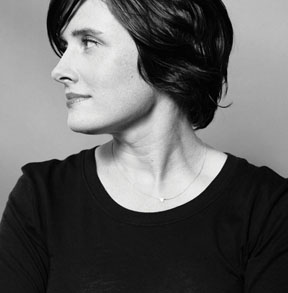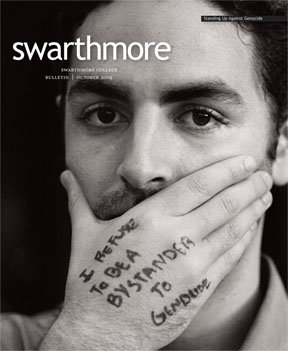Innovative Thinking
Valerie Casey ’94 created the Designers Accord and initiated a movement to help industries become sustainable.
 Designer and creative director Valerie Casey ’94 has worked with organizations around the world helping them launch new products and services. Recently, she’s been devoting much of her attention to motivating others in the design field to create positive social and environmental impacts.
Designer and creative director Valerie Casey ’94 has worked with organizations around the world helping them launch new products and services. Recently, she’s been devoting much of her attention to motivating others in the design field to create positive social and environmental impacts.
It was out of personal frustration that Casey conceived a “Kyoto Treaty” for the design community, now called the Designers Accord. She sketched out the five-point agreement on sustainability on the back of a notebook during a cross-country flight in 2007. She had just left meetings with executives at two Fortune 50 companies, where she hadn’t brought up the topic of sustainability but knew that she should have. “I didn’t have the language or the knowledge to address the issue. No one in the design community did, although we were all acutely aware of our responsibility to play a role. There was a general sense of frustration and helplessness,” Casey says.
The Designers Accord provides a structure for designers, educators, and business leaders to integrate sustainability into their work. Adopters of the Designers Accord commit to five guidelines that provide collective and individual ways to take action. The idea is that by collaborating, creative professionals can more effectively tackle environmental and social issues. The notion of sharing best practices in this way is counter to the traditional model of competition. Casey says that in the design world, the idea of sharing a firm’s knowledge is “unheard of.” Industry professionals are highly protective of their intellectual property.
“When people join the Designers Accord, they are agreeing to begin this journey. They don’t have it all figured out, but they do need to have greater awareness of the impact of their design decisions. We don’t have the luxury of ignoring the issues around climate change. We have to apply our different skills to create more innovative solutions.”
“I think of design in the broadest sense, where all of us are ‘designers.’ When you wake in the morning, you ‘design’ your day, you ‘design’ what you’re going to wear, how you’re going to present yourself. These are all ‘design’ decisions,” she says. “By recognizing the series of simple and complex choices each of us makes every day, you can begin to think differently about the interventions you can make.”
Casey says she is also supportive of new movements being created to tackle climate change because of her own struggle to find common ground in her industry. When she created the Designers Accord, Casey says it wasn’t out of the desire to start a new organization necessarily but rather to use design in a different way.
“For me, the truest measure of success of the Designers Accord is the degree to which the sophistication around sustainability has grown in the creative community,” she says. “Designers are truly integrating sustainability as a strategic, critical lens and as a result their work is better and their clients and customers benefit.”
The concept has struck a chord and, today, there are almost 200,000 members involved in over 100 countries, representing all design disciplines including industrial design, architecture, graphic design, research, engineering, and strategy.
Casey has been recognized as a Fortune magazine “Guru” of the year and a Fast Company “Master of Design” for her innovative thinking on sustainability and problem-solving, but she still recognizes the challenges of fully embracing the principles of sustainability in all aspects of her life. At her home in the San Francisco Bay Area, she and her partner of 15 years, computer scientist Susan Housand often find themselves making choices about sustainability, considering each decision. “But with our 4-year-old twins, Harper and Frederick, sometimes the best answer is a plastic toy!” Casey says.
The Designers Accord is a five-year project—the first two years have focused on raising awareness throughout the creative community; in the second two years, the focus will be on education of the next generation of designers and professional development. In the fifth year, priority will be placed on influencing government policy on sustainability issues. There is so much urgency around climate change, Casey believes that designers should achieve the goals of the Designers Accord in that time. “Designers bring great creativity and optimism to the challenges before them. What could be better than focusing our collective energies on the most critical issue of our time?”
 Email This Page
Email This Page